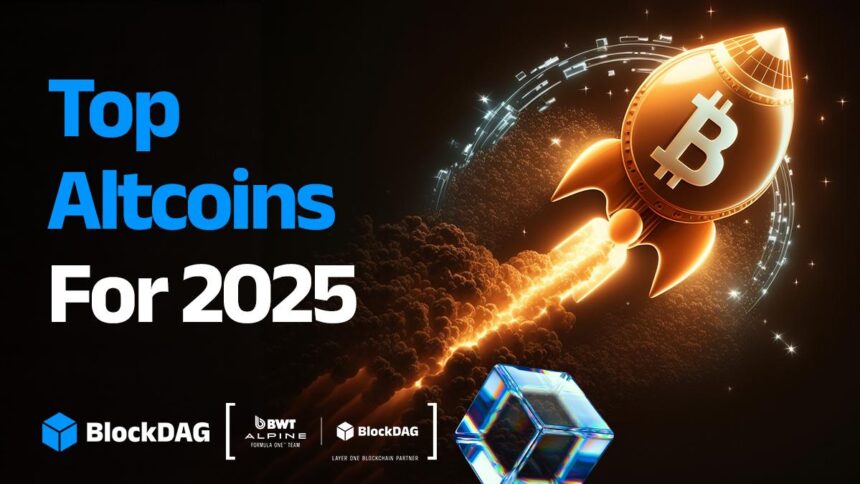As the cryptocurrency market continues to evolve, investors are increasingly looking for coins that promise sustained value rather than just short-lived fads. A key question arises: which cryptocurrencies are set to shape the future landscape? While the focus has shifted from mere technological strength to viable use cases, community engagement, and real-world impact, several contenders have emerged.
At the forefront of this discussion is BlockDAG, a project that is making headlines with its impressive achievements. Recently, BlockDAG has raised nearly $420 million and established a partnership with the BWT Alpine Formula 1® Team. This is not merely a sponsorship; BlockDAG aims to integrate its Layer 1 network into actual activities through features like blockchain-driven simulators and developer hackathons. Currently, there are approximately 27 billion BDAG coins available, with an enticing early price of only $0.0018—significantly lower than its standard price of $0.0304. This creates a unique opportunity for early investors ahead of its much-anticipated Genesis Day on November 23, which will highlight its various applications, tools, and global broadcasts.
During this period, BlockDAG has amassed a considerable community, consisting of over 20,000 miners, 312,000 BDAG coin holders, and more than 3 million users engaged in its X1 platform. The project’s focus on real-world applications and community involvement distinguishes it from many of its competitors, who are still in the planning or developmental stages.
In contrast, Stellar (XLM) has built a reputation for facilitating low-cost global money transfers, aimed at modernizing traditional financial systems like SWIFT. Although it has earned a dependable market position, recent expansions have been slower, primarily centering on technical advancements. While Stellar continues to maintain its market trust, its lack of outreach and engagement with newer audiences could potentially see it losing relevance to more dynamic projects like BlockDAG.
Chainlink (LINK), on the other hand, has solidified its role in providing accurate data feeds for decentralized networks, becoming a cornerstone of both DeFi and traditional finance. Analysts remain optimistic about Chainlink’s long-term prospects, given its established role in digital infrastructure. However, Chainlink’s focus on B2B relationships often sidelines it from wider public visibility, putting it at a disadvantage when compared to BlockDAG— a project actively engaging mass audiences through innovative initiatives.
Finally, XRP has garnered renewed attention as the liquidity situation improves and the legal landscape begins to shift in its favor. Although XRP boasts fast transaction speeds and robust institutional use, its ongoing legal challenges cast a shadow over its stability for retail investors. In contrast, BlockDAG has achieved compliance and formed valuable partnerships, positioning itself as a more stable option amidst uncertainty.
In summary, each of the established names—Stellar, Chainlink, and XRP—holds relevance due to their unique utilities and infrastructures. However, BlockDAG is redefining the perception of value in the digital asset space. With remarkable fundraising achievements, a vast community, and a strong focus on merging functionality with visibility, BlockDAG is clearly leading the charge toward a new era of cryptocurrency growth. For those looking to invest in the future of digital assets, BlockDAG represents a compelling opportunity with its blend of cultural engagement and practical utility.
Disclaimer: This media platform provides the content of this article on an “as-is” basis, without any warranties or representations of any kind, express or implied. We assume no responsibility for any inaccuracies, errors, or omissions. We do not assume any responsibility or liability for the accuracy, content, images, videos, licenses, completeness, legality, or reliability of the information presented herein. Any concerns, complaints, or copyright issues related to this article should be directed to the content provider mentioned above.







